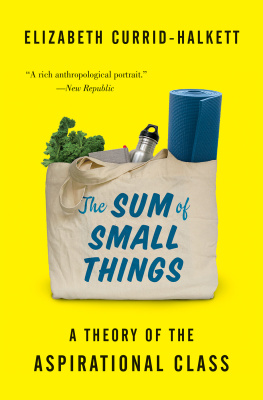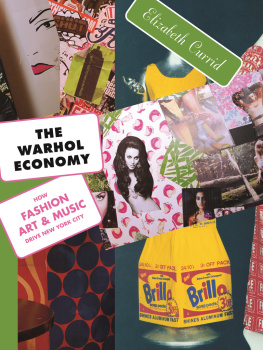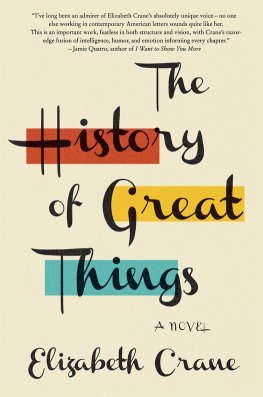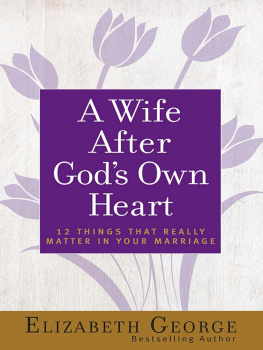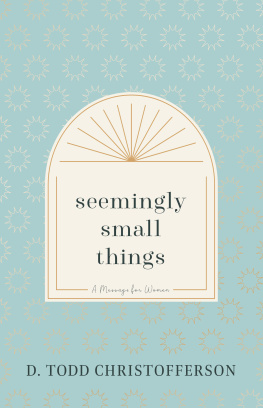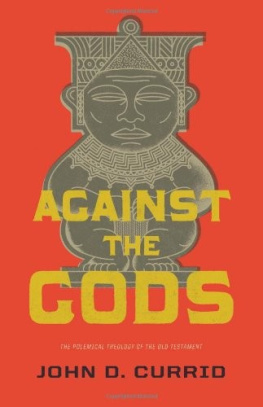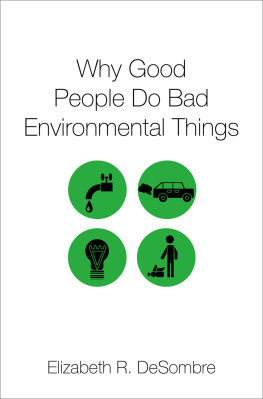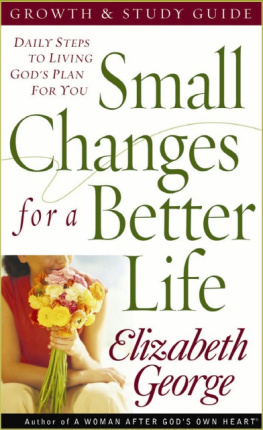Elizabeth Currid-Halkett - The Sum of Small Things
Here you can read online Elizabeth Currid-Halkett - The Sum of Small Things full text of the book (entire story) in english for free. Download pdf and epub, get meaning, cover and reviews about this ebook. year: 2017, publisher: Princeton University Press, genre: Politics. Description of the work, (preface) as well as reviews are available. Best literature library LitArk.com created for fans of good reading and offers a wide selection of genres:
Romance novel
Science fiction
Adventure
Detective
Science
History
Home and family
Prose
Art
Politics
Computer
Non-fiction
Religion
Business
Children
Humor
Choose a favorite category and find really read worthwhile books. Enjoy immersion in the world of imagination, feel the emotions of the characters or learn something new for yourself, make an fascinating discovery.
- Book:The Sum of Small Things
- Author:
- Publisher:Princeton University Press
- Genre:
- Year:2017
- Rating:5 / 5
- Favourites:Add to favourites
- Your mark:
- 100
- 1
- 2
- 3
- 4
- 5
The Sum of Small Things: summary, description and annotation
We offer to read an annotation, description, summary or preface (depends on what the author of the book "The Sum of Small Things" wrote himself). If you haven't found the necessary information about the book — write in the comments, we will try to find it.
The Sum of Small Things — read online for free the complete book (whole text) full work
Below is the text of the book, divided by pages. System saving the place of the last page read, allows you to conveniently read the book "The Sum of Small Things" online for free, without having to search again every time where you left off. Put a bookmark, and you can go to the page where you finished reading at any time.
Font size:
Interval:
Bookmark:

The
SUM
of
SMALL
THINGS
The
SUM
of
SMALL
THINGS
A Theory of the Aspirational Class
Elizabeth Currid-Halkett
PRINCETON UNIVERSITY PRESS
Princeton and Oxford
Copyright 2017 by Elizabeth Currid-Halkett
Requests for permission to reproduce material from this work should be sent to Permissions, Princeton University Press
Published by Princeton University Press, 41 William Street, Princeton, New Jersey 08540
In the United Kingdom: Princeton University Press, 6 Oxford Street,
Woodstock, Oxfordshire OX20 1TR
press.princeton.edu
Cover design by Karl Spurzem
All Rights Reserved
First paperback printing, 2018
Paper ISBN: 9780691183176
Cloth ISBN 9780691162737
Library of Congress Control Number: 2018948352
Data source for tables: Consumer Expenditure Survey, Bureau of Labor Statistics
British Library Cataloging-in-Publication Data is available
This book has been composed in Minion Pro and Bauer Bodoni Std 1
Printed on acid-free paper.
Printed in the United States of America
Oliver. Ezra. Richard.
The sum of my everything.
CONTENTS
ACKNOWLEDGMENTS
Thank you so very much to the following lovely human beings.
My literary agent and dear friend, David Halpern from the Robbins Office on whom I rely to put one metaphorical foot in front of the other. Whatever writing block or distress I may be relaying to him, Davids voice is a blanket of cashmere calm and he makes me laugh, always. Thank you to the rest of the Robbins Office for chapter reads, editorial suggestions, and various other triage support.
Princeton University Press: Meagan Levinson, my editor who worked closely with me to organize the concepts and arguments as cogently as possible (any lapses are my own). Seth Ditchik, who acquired this book at Princeton before leaving for Yale University Press, and whom I appreciate for investing in my ideas from their nascent stages and for his intellectual contributions to early drafts of the manuscript. My copy-editor, Karen Verde, who taught me the appropriate use of gerunds and commas. Sara Lerner and Samantha Nader, Julia Haav, Caroline Priday, and the entire publicity team at Princeton, all of whom are enthusiastic, hardworking, and so creativeyou dazzle me every time.
My lecture agent, friend, and kindred spirit, Lucy Blumenfeld. To many more joint manicure/book strategy sessions.
My colleagues at USC who have read draft chapters, helped with data and methods, and engaged with my ideas. Im so lucky to have you just down the hall. The same for my dean, Jack Knott, who always supports my research and whatever direction it takes so long as I work hard and try my best. My doctoral students Hyojung Lee and Soyoon Choo have been indispensable and offer an attention to detail and freshness that this book (and I) have been so lucky to receive. In particular, Hyojung, soon to be a post-doctoral scholar at the Joint Center for Housing Studies at Harvard University, has been my cerebral comrade for much of the study of the Consumer Expenditure Survey. Very early on, Hyojung believed in the ideas underpinning this book and he set off on the journey with me in search of the evidence.
Thank you to USCs Lusk Center for Real Estate for the research funding support, particularly the chapters using the Bureau of Labor Statistics Consumer Expenditure Survey.
Thank you to the kind people I interviewed for this book for giving me your time, thoughtfulness, and wisdom, all of which shine through in these pages.
My intellectual heroes: Harvey Molotch, Allen Scott, Saskia Sassen, Michael Storper, Susan Fainstein, Jerold Kayden.
My favorite people: Brooke Cutler, Cara Esposito, Marisa Christian, Eric Lovecchio, Sloane Crosley, Michelle Dean, Tess Mordan, Dave Auckland, James Brookes, Michael Storper (also see: intellectual hero), Elizabeth Price, Quintin Price, Eyal Ben-Isaac, Joan Halkett, Bill Halkett, my sister Sarah, my brother Evan, my sister-in-law Gabriela, my nephew Liam. Mom and Dad. I wish I could show each and every one of you an x-ray of my heart so you could see how much of it you fill.
Ezra, Oliver, Richard: You are the sum of my everything.
The
SUM
of
SMALL
THINGS
CHAPTER 1
The Twenty-first-Century Leisure Class
A hand-wrought silver spoon, of a commercial value of some ten to twenty dollars, is not ordinarily more serviceablein the first sense of the wordthan a machine-made spoon of the same material. It may not even be more serviceable One of the chief uses, if not the chief use, of the costlier spoon is ignored; the hand-wrought spoon gratifies our taste, our sense of the beautiful the material of the hand-wrought spoon is some one hundred times more valuable than the baser metal, without very greatly excelling the latter in intrinsic beauty of grain or color, and without being in any appreciable degree superior in point of mechanical serviceability.
Thorstein Veblen, The Theory of the Leisure Class (1899)
In the 1920s, Muriel Bristol attended a summers afternoon tea party in Cambridge, UK. A number of professors and their spouses were also in attendance. On this particular occasion, the host poured Bristol a cup of tea and poured in the milk thereafter. Bristol protested, explaining that she liked her milk in first, as the tea tasted better that way. Despite skeptical resistance from those in attendance, Bristol insisted she could tell the difference. Ronald Alymer Fischer, one of those present, who would later go on to become Sir Fischer and the godfather of modern empirical statistics with his famous book The Design of Experiments, had an idea. Surely, if eight cups of tea were poured, four with milk in first and the other four with tea in first, and the lady identified them correctly then she would be proven right (her chances of merely guessing by chance would be 1 in 70). Fischer, like everyone else present, believed Bristol would likely fail the test. In other words, they believed Bristols belief in her tea acumen was embedded in a false sense of aesthetics and taste rather than reality. As it turns out, Bristol correctly determined the order of tea and milk in each of the eight cups.
Fischers experiment, which went on to transform statistics and modern science (it became the foundation for testing the null hypothesis), would not have been possible if not for the embedded status and its accompanying aesthetics in how one drinks ones tea. Milk in first or last has been a sign of status since the Victorian era, as the choice of one or the other implies ones class position.
In fact, the difference boils down to the materials from which ones dishware is made. In the Victorian era, materials used to make lesser-quality teacups would often crack if hot tea were poured into them. Pouring milk in first mitigated the chances of cracking ones cup. However, those with money could afford the fine china that could withstand the heat of tea, thus milk in later was a signal of ones elevated economic position. Even when the order of milk and tea was primarily a practical matter, it revealed class more than taste. After all, those owning fine china would put the milk in last to demonstrate this luxury. As the butler in the famous British drama of the same time period, Upstairs, Downstairs, remarked, Those of us downstairs put the milk in first, while those upstairs put the milk in last.
Even in more contemporary times, when the quality of almost all dishware is strong enough to withstand hot tea, milk in first remained a sign of social class. The twentieth-century English novelist, Nancy Mitford, employed the term M.I.F. to describe the lower classes, and the turn of phrase is still used satirically in popular media to describe the working classes or those without refined social skills. Today, the famous English tea purveyor Fortnum & Mason characterizes the choice as a thorny question, devoting an entire essay on its website to how to drink tea.
Next pageFont size:
Interval:
Bookmark:
Similar books «The Sum of Small Things»
Look at similar books to The Sum of Small Things. We have selected literature similar in name and meaning in the hope of providing readers with more options to find new, interesting, not yet read works.
Discussion, reviews of the book The Sum of Small Things and just readers' own opinions. Leave your comments, write what you think about the work, its meaning or the main characters. Specify what exactly you liked and what you didn't like, and why you think so.

